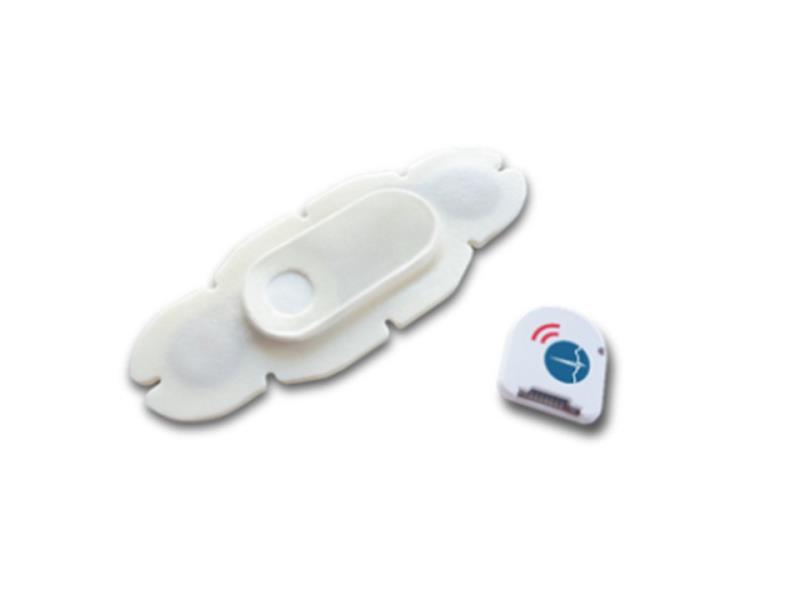 Photo credit; Vital Connect Inc.
Photo credit; Vital Connect Inc.A novel, wearable heart failure (HF) patch accurately predicted worsening HF and impending rehospitalization days before the event actually happened in adults who were recently discharged from hospitalization for HF (HHF), according to the LINK-HF* study.
With a predictive accuracy that was comparable to implanted devices, the wearable sensor thus presents a low-cost noninvasive approach to reducing HHF, which according to the investigators, constitutes 80 percent of the cost attributed to HF care.
“Because not all HF patients have an indication for a pacemaker or a defibrillator, and because implantation of a dedicated device presents procedural risks, noninvasive methods of monitoring may be more useful and cost-effective in patients temporarily at increased risk of HF-related hospitalization,” the investigators said.
The multicentre, observational study involved 100 participants (mean 68.4 years, 98 percent male) who were hospitalized for an acute HF exacerbation. After hospital discharge, they were asked to wear the sensor patch on the chest 24 hours a day, for at least 30 days and up to 90 days. [Circ Heart Fail 2020;13:e006513]
Continuous streams of incoming data of vital signs detected by the sensor such as respiratory rate, heart rate, heart rhythm, and physical activities (including body posture, walking, and sleeping) for each participant were subjected to a machine learning algorithm to derive a personalized baseline model of what is considered as “normal” physiological values for each patient. Any deviation from the expected “normal” baseline value will trigger an alert to indicate a worsening of HF.
During the study, 35 unplanned nontrauma hospitalization events had occurred, of which 24 events were due to worsening HF.
The sensor platform was able to predict the risk of HHF with 76.0–88.5 percent sensitivity, which the investigators noted, was comparable with implanted devices. Specificity of the sensor platform was 85 percent.
Moreover, the sensor was able to alert the patients of an impending worsening HF at a median of 6.5 days (interquartile range, 4.2–13.7) before they were actually readmitted to hospital. According to the authors, the length of the interval is a time window that should allow for intervention to be introduced to reverse the worsening.
“With the use of remote data from the sensor, … we have shown that we can predict the future. Next, we will look at whether we can change the future,” said lead author Professor Josef Stehlik, the University of Utah School of Medicine in Salt Lake City, Utah, US. “With the evolution of technology and with artificial intelligence statistical methods, we have new tools to make this happen.”
“The risk of hospitalization is significantly elevated in the first 90 days after hospital discharge, with the readmission rate being ~30 percent. This time of increased risk, therefore, appears to be an opportune period for noninvasive monitoring aimed at identifying patients with incipient HF decompensation,” suggested Stehlik and co-authors.
As the study population comprised mostly men with HFrEF**, it remains unknown if similar findings also apply to female patients and those with HFpEF***.
“A critical step will be implementation into clinical workflow and development of an algorithmic treatment response to system clinical alerts,” the investigators stated.